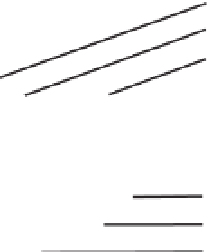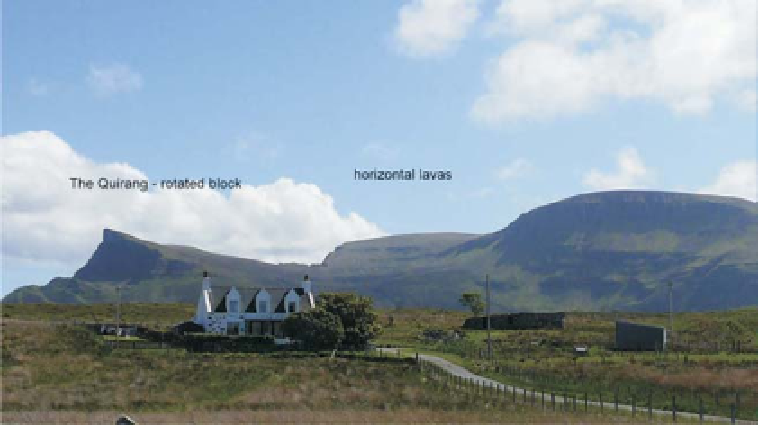Geology Reference
In-Depth Information
Structural effects of gravity
9
9
Structural effects of gravity
The force of gravity affects all geological
structures to a greater or lesser degree,
and as explained in Chapter 4, is a
component of all natural stress fields.
However, there are certain types of
structure where gravitational pressure is
the controlling influence, and it is these
that are the subject of this chapter.
zone of
soil
creep
A
Gravitational effects caused by
steep slopes
All steep slopes are potentially unsta-
ble; we are all probably familiar with
examples of cliff collapse and land-
slides where the rock has been weak-
ened, perhaps by heavy rain, and slid
downhill under the influence of gravity
alone. Steep slopes are particularly
vulnerable to collapse when subjected
to earthquake vibration. Movement of
material down-slope varies from the
C
B
E
D
Figure 9.1
Gravitational instability of steep slopes.
A.
A strong, cohesive layer overlying weaker
material is undercut by erosion and slides down
a steep slope.
B.
The outer part of a cliff breaks
off and rotates as it slides down a listric fault.
C.
An outer layer of bedrock on a steep slope is
subjected to soil creep, where the weaker material
flows down-slope causing the stronger beds to
rotate downhill.
D.
Gravity-driven down-slope
movement of a strong layer is resisted at the foot
of the slope, causing deformation at the end of the
moving block.
E.
Downward flow of the moving
block as in D is aided by a thrust cutting up to the
surface. Red lines are faults.
F.
View from the north
showing the Quirang back-tilted block on the left
with the horizontal Cenozoic lavas on the right;
Trotternish peninsula, NE Skye.
F
F



































Search WWH ::

Custom Search